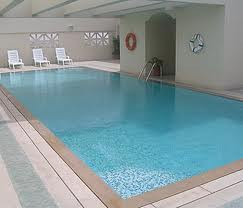Here's some of the smart home-tech developers are using to entice buyers and renters in high-end buildings

iStock
The competition in New York's new development sales and rental markets is stiff. One of the ways developers seek to distinguish their offerings from others is with the latest in "smart home" tech.
Examples include the key-coded elevators enabling access only to residents’ own floor for enhanced security and wifi hotspots in common areas at Fifteen Hudson Yards, and roller motorized shades and wireless lighting controls at One Hudson Yards.
Some buildings go heavy in on the green tech. There's wind-generated electricity, a solar-powered domestic water production system supplying hot water, and a landscaped green roof at Alfa Development's 200 East 21st Street. (The building is part of the company's "Green Collection.") At Citizen360 on the Upper East Side, not only does the building offer charging stations for electric cars, but it features an automated parking system that parks, stores, and retrieves your car without someone physically driving it into a garage.
Among such fantastical frills, what do prospective tenants and buyers with money to spare really care about and use? We asked around to find out.

Wireless thermostats, wireless speakers
Not surprisingly, one of the smart home features most people have heard of—a NEST thermostat, or some other remote heating and cooling control— is quite popular.
"NEST, people love," says Dave Maundrell, executive vice president of new developments for Brooklyn and Queens at Citi Habitats. "It goes back to comfort and luxury. Temperature comfort is a big deal. You leave in the morning, it's 70 degrees. When you come home it's colder. It's great to dial in, log in [and adjust the temperature] so it's not freezing when you get home."
"The smart way to go is basic: Sonos [wireless sound system] and NEST," says Compass broker James Morgan. He adds that he has worked with clients who have installed higher-end systems, and in the end they only ended up creating more headaches.
Blair Sheehan, a broker with Prevu (a Brick Underground sponsor) agrees that remote-controlled systems such as Sonos have more appeal than, say, radiant heat floors.
Sometimes a room with a view is too bright
In certain buildings, some smart features are all but essential.
"If a unit is all glass or has lots of windows, motorized shades are great and necessary," Sheehan says. But, she adds, "In my experience the systems are a bonus but not necessarily a selling point."
Keyless entry is getting more advanced
Keyless entry has been around for years, but it's continuing to grow in popularity. Part of the reason it has yet to become ubiquitous has been the additional upfront expense to developers.
"If you are a seller installing all the systems, you can’t always get those expenses back out, because the technology updates so quickly or some buyers won’t be willing to pay extra for those updates," Sheehan says.
Keyless entry systems enable residents to gain entry to buildings and units with key fobs or Bluetooth-enabled phones. Some now also let people program individual entry codes for visitors, and one-time access codes for deliveries, dog-walkers, etc. Buildings featuring these kinds of systems include ARC in Long Island City, and Park and Shore in Jersey City. (Owners of rent-stabilized buildings are also using them to track their tenants, but that's another story.)

A cup of coffee and a look at the train delays
Some buildings are using smart tech for amenities both practical, and pretty fun. Murray Hill's House39 has a transit screen in its lobby that lets residents know the full scope of transportation options available in real time, such as train and bus status, as well as the locations of Lyft, Uber, Via, and Zipcar vehicles.
But one of the most popular smart technology applications in the building is the TopBrewer app, which allows residents to order up a hot beverage (including espresso drinks, tea, hot chocolate, and warm milk) from a spout in a second floor common area.
"It's essentially a self-serve Starbucks inside the building," says Alex Vaynrokh, head of sales and marketing for the property.
The common area also features free wifi and printing, for those who don't have to brave the subway for work.


























